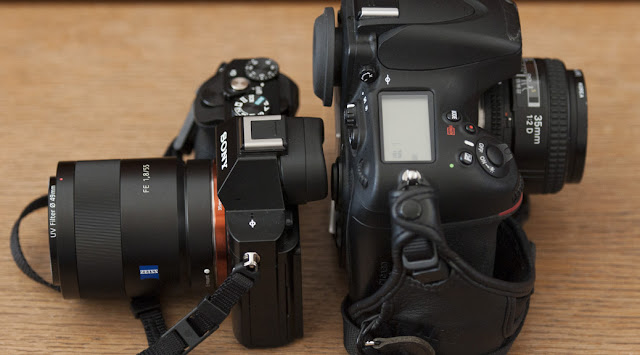What are the differences between a DSLR and a SLR digital camera?
SLR cameras allow expert photographers to change lenses and choose the right lens for the given shooting situation. DSLR refers to SLR cameras that take digital photos and the few cameras left on the market still using film are simply called SLR cameras.
DSLR cameras are great for budding photographers because they offer live previews and do not waste film when photographers make mistakes. There are more DSLRs available in the market so they tend to be cheaper. Film SLR cameras, on the other hand, offer a slightly better quality of colour, tone and contrast.
Technology
- Digital single-lens reflex (DSLR). A reflex mirror that allows live and digital optical viewing through the lens taking the image.
- Single-lens reflex(SLR). A reflex mirror that allows live optical viewing through the lens taking the image.
Requires
- DSLR: Memory cards
- SLR: Camera film
Storage
- DSLR: Thousands of images
- SLR: 36 images per roll of film
Shutter Speed
- DSLR: 1 – 1/4000 s
- SLR: 1-1/1000 s
Both DSLR and SLR Camera has Optical Viewfinder
Both DSLR and SLR Camera are Manual Controls
DSLR and SLR Camera has Interchangeable Lenses
Reusability
- DSLR: Images can be erased; card can be reused for a new set of pictures
- SLR: Images cannot be erased, and the film cannot be reused
Video Capture
- DSLR: Sometimes
- SLR: No
Live Preview
- DSLR: Sometimes
- SLR: No
Technology
DSLR and SLR cameras both reflect light that enters through the lens using a mirror so that an image can be seen in a viewfinder. However, an SLR camera uses a film made of plastic, gelatin and other material to record the image - a DSLR captures the image digitally, on a memory card.
Required Materials and Processing
Memory cards used in a DSLR camera
A DSLR requires a flat memory card to store all its images in digital format. This little card can store thousands of images, and the user is able to delete any unwanted images instantly to make space for more. The card is reusable and the image can be seen instantly on camera or a computer and can be printed right away with an external printer.
An SLR requires a roll of film usually made of a plastic strip lined with thin layers of gelatin containing silver halide crystals, which react chemically to light to form a photographic image. This chemical reaction needs to take place in a photo lab and requires a few hours to print. The film is not reusable and can hold only up-to 36 photos.
Picture Quality
Both DSLRs and SLRs allow the photographer to view and focus the image using the attached lens. The first DSLRs had poorer picture quality than film SLRs. Advances in digital technology, including the number of megapixels available, have almost completely erased this difference.
Speed
Shutter speed depends on the type of DSLR or SLR. Entry level SLRs typically have a speed of 1 to 1/1000th of a second; the Konica Autoreflex TC has a shutter speed of 1/8 to 1/1000. Most modern DSLRs have shutter speeds up to 1/4000th of a second, much as high-end ones can have shutter speeds as high as 1/8000 and above.
Optical Viewfinder
Both DSLR and SLR cameras use optical viewfinders to take pictures. DSLRs can also come with LCD viewfinders, like in point-and-shoot digital cameras, which is handy for situations when an optical viewfinder cannot be used, say underwater photography.
Complexity
Both DSLR and SLR cameras are similar in that they have several settings that the photographer controls, and can be difficult for beginners to use. They also require maintenance in keeping the lens and sensor clean and dust-free. DSLRs are more beginner-friendly as they allow the photographer to preview the image or take multiple images without wasting film. They also typically come with some in-built settings for different scenarios, and the user can switch to the LCD viewfinder if they wish.
Price
On Online Shopping for Electronics, Apparel, Computers, Books, DVDs & more, DSLR cameras range from about $500 to several thousand dollars, depending on the quality. There are far less film SLR cameras available, and the cost ranges from under $100 for a second-hand basic camera to around $1000. However, SLR cameras have the added cost of film rolls.
Other Pros and Cons
DSLRs allow photographers to store thousands of pictures on a memory card, while a roll of film in an SLR camera can only hold about 36 photographs. DSLRs also allow the photographer to preview the image after it has been taken, and make it easy to upload the photo to a computer to edit or print.






Comments
Post a Comment